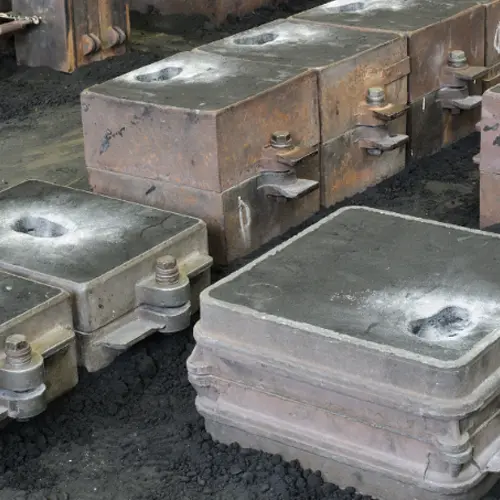When developing new products, once the appropriate metal casting method is determined, the right casting mold will be selected. The efficient casting mold process starts with the design method, which is a comprehensive consideration process involving many factors. The following are some key selection principles:
1. Product structure
1.1 Simplicity and complexity: The simpler the product structure, the easier the mold manufacturing and the lower the cost. Complex product structure may increase the difficulty and cost of mold manufacturing.
1.2 Size and precision: The size and precision requirements of the product will directly affect the selection of the mold. Products with high precision requirements usually need to choose high-precision molds to ensure product quality.
2. Product selection
2.1 Product type: Different product types require different types of molds.
2.2 Production batch: Products produced in large quantities are suitable for the use of molds with a high degree of automation to improve production efficiency; products produced in small quantities may be more suitable for simple molds made by hand.
3. Mold material
3.1 Material type: Casting molds are made of various materials, including plastics, aluminum alloys, steel, wood, etc. When choosing, you need to weigh the specific requirements of the product and the production cost.
3.2 Material properties: The hot and cold processing properties, wear resistance, corrosion resistance, toughness, etc. of the material are also factors that need to be considered when selecting mold materials.
4. Occasions of use
4.1 Process requirements: Different casting processes have different requirements for molds. For example, sand casting is suitable for most castings, but the surface finish and material density may be relatively low; while die-casting molds are suitable for casting high-melting-point metals, and the requirements for mold materials are higher.
4.2 Production environment: The temperature, humidity, dust and other conditions of the production environment may also affect the selection and service life of the mold.
5. Economic benefits
5.1 Cost estimation: When selecting a casting mold, it is necessary to make a preliminary cost estimate of the selected mold, including the manufacturing cost, use cost and maintenance cost of the mold.
5.2 Economic benefit analysis: Combined with factors such as the market demand, sales price and production cost of the product, the economic benefits of the selected mold are analyzed to ensure that the selected mold can bring the greatest economic benefits to the enterprise.
Cost of casting molds
The cost of casting molds mainly depends on the customer’s specifications. The simpler the design, the cheaper the cost. The cost of casting molds also depends on the following factors. .
1. Casting method: Casting method is the first and most critical factor in each casting step. Die casting and centrifugal casting require cheaper tools than sand casting and investment casting. On the other hand, high-volume production requires expensive manufacturing tools.
2. Part geometry: Part geometry has a great influence on the complexity of the design. Simplified castings without internal shapes are less expensive. Detailed geometries with multiple internal shapes are relatively expensive.
3. Material type: Low-density board or wood is cheap, steel or cast iron is expensive.
4. Durability: How many times the casting mold is expected to be used.
The premise of producing high-quality castings is to have qualified casting molds. No matter whether the design proposed by our customers is complex or simple, we always promise to use the most suitable casting mold making technology to save production time and casting costs.
Shengrong iron casting foundry will help you to choose the economic molds





